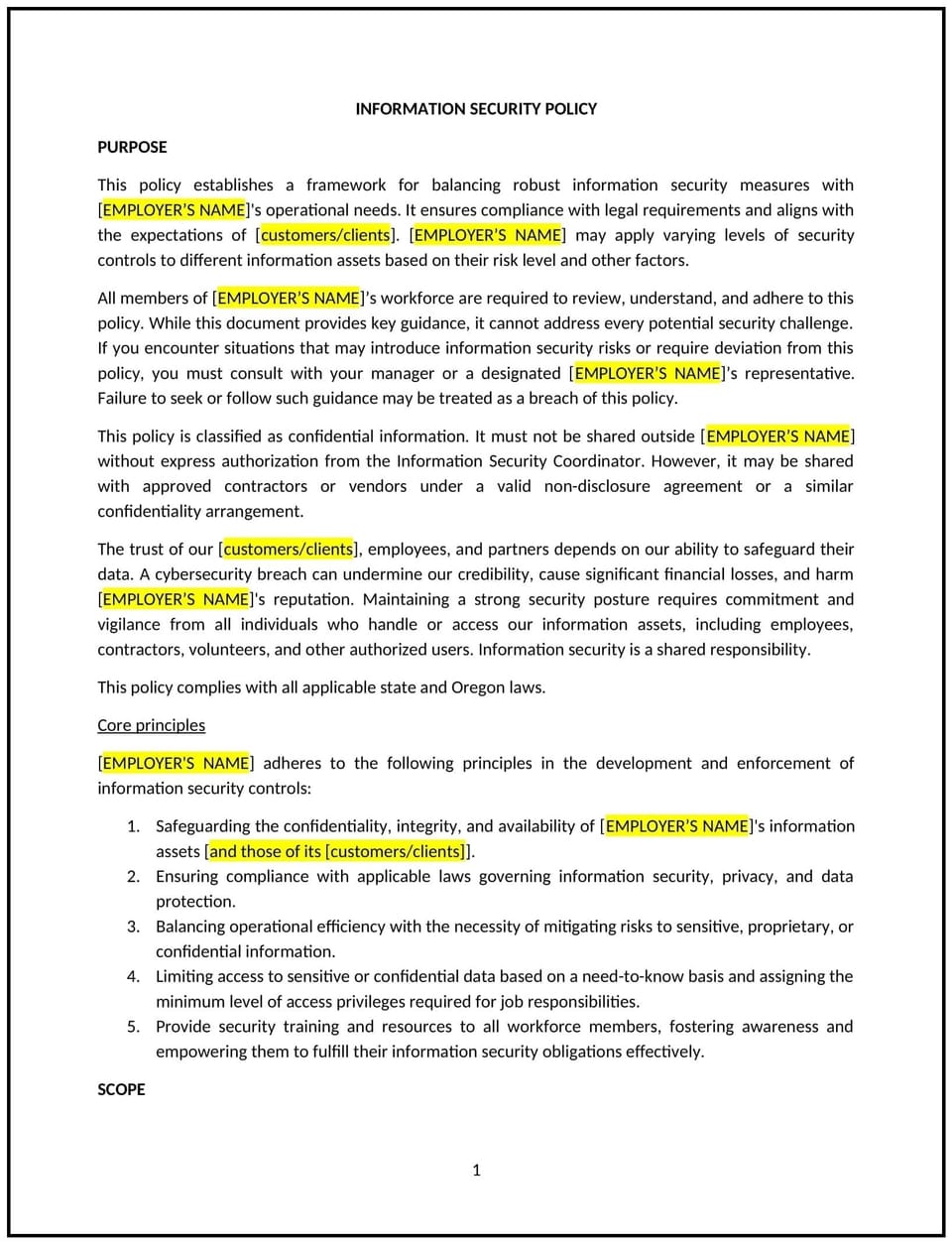Information security policy (Oregon): Free template

Information security policy (Oregon)
This information security policy is designed to help Oregon businesses protect sensitive data and IT systems from unauthorized access, breaches, and cyber threats. It outlines procedures for data protection, access controls, and incident response.
By adopting this policy, businesses can safeguard customer and employee information, reduce cybersecurity risks, and align with best practices for data security.
How to use this information security policy (Oregon)
- Define data categories: Classify data based on sensitivity, such as personal, financial, or proprietary information.
- Establish access controls: Limit access to sensitive data to authorized personnel only.
- Implement security measures: Use encryption, firewalls, and antivirus software to protect IT systems.
- Train employees: Educate staff on cybersecurity best practices, such as recognizing phishing attempts.
- Monitor systems: Regularly review logs and alerts for signs of unauthorized access or breaches.
- Develop an incident response plan: Outline steps for responding to data breaches or cyberattacks.
- Review and update: Assess the policy annually to ensure it aligns with evolving cybersecurity threats.
Benefits of using this information security policy (Oregon)
This policy offers several advantages for Oregon businesses:
- Protects sensitive data: Reduces the risk of data breaches and unauthorized access.
- Enhances trust: Demonstrates a commitment to safeguarding customer and employee information.
- Reduces financial risks: Minimizes the potential costs of data breaches, such as fines and legal fees.
- Improves compliance: Promotes adherence to data protection laws and industry standards.
- Supports business continuity: Ensures IT systems remain secure and operational.
Tips for using this information security policy (Oregon)
- Communicate clearly: Share the policy with employees and include it in onboarding materials.
- Conduct regular training: Educate staff on cybersecurity best practices and policy requirements.
- Monitor compliance: Regularly review access logs and security reports.
- Address incidents promptly: Follow the incident response plan to mitigate damage from breaches or attacks.
- Update regularly: Revise the policy as needed to address new cybersecurity threats or regulatory changes.
Q: How does this policy benefit businesses?
A: It helps businesses protect sensitive data, reduce cybersecurity risks, and enhance customer trust.
Q: What types of data should be protected under this policy?
A: Sensitive data includes personal, financial, and proprietary information, as well as customer and employee records.
Q: How often should employees receive cybersecurity training?
A: Employees should receive training annually or whenever there are significant changes to the policy or threats.
Q: What should businesses do if a data breach occurs?
A: Businesses should follow their incident response plan, notify affected parties, and take steps to prevent future breaches.
Q: How often should this policy be reviewed?
A: The policy should be reviewed annually or whenever there are significant changes to cybersecurity threats or regulations.
This article contains general legal information and does not contain legal advice. Cobrief is not a law firm or a substitute for an attorney or law firm. The law is complex and changes often. For legal advice, please ask a lawyer.


